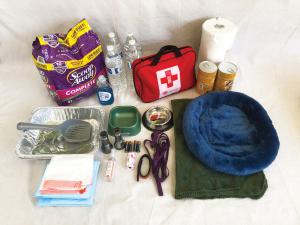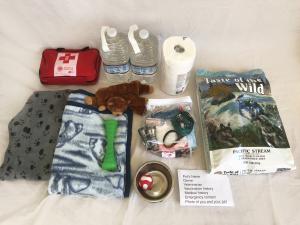Pet Emergency Preparedness
Whatever type of pet you have, be sure to store emergency food, water and supplies and to have a plan for your pet.
Recruit a neighbor to care for your animals if you are unable to go home. Show them where you keep your emergency supplies of food, water, medication, sanitation, and other pet needs. Include an inventory along with photos of your animals, their dietary requirements, veterinarian information, vaccination and medical records.
While cats and dogs may be able to go to a human emergency shelter, other pets such as livestock, horses, reptiles, birds, rodents and exotic pets will need a plan specific to their needs. Make a plan for transporting your animals, and where you will take them until you are able to return to your home.
Get more information and tips about pet preparedness from the Girl Scout Silver Award project by Troop 61427:
- Pet Preparedness Checklist
- Emergency Preparedness for Dogs
- Emergency Preparedness for Cats
- Map of Area Veterinarians, Groomers, and Pet-friendly Hotels
- How well do you understand preparing your pets for emergencies? Take the Quiz!
Learn about storing emergency supplies and preparing for evacuations and more! Take a moment to watch the recording of the "Pets and Emergency Preparedness" webinar hosted by Lisa Towell, Animal Disaster Planner.
Here are examples of cat and dog emergency kits to help you get started. Each animal should have enough provisions to last them for 3-5 days. Below are links to the Halter Project and Santa Clara County Fire where you will find valuable pet emergency preparedness content.


